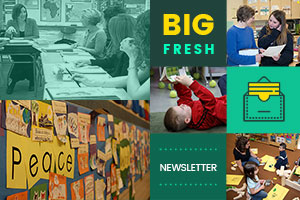The dinner table is the center for the teaching and practicing not just of table manners but of conversation, consideration, tolerance, family feeling, and just about all the other accomplishments of polite society except the minuet.
Judith Martin
The first time Andy took me to his grandparents’ house, he cautioned me: “Don’t stop eating until you are done or Grandpa will take your plate.” Grandpa Ayres is in charge of cleaning up after meals. Grandma cooks and Grandpa cleans. Even now, as he nears 100, we remind our kids: “If you stop eating, Grandpa will swipe your plate.”
When we were first married, my parents came over for dinner. As my mom finished her last bite, Andy swooped in and nabbed her plate. It was a maneuver that would have made Grandpa Ayres beam with pride. My mom did not have the same reaction. Her face fell and she said, “Well, I guess you’re ready for us to leave.” She began getting up from the table.
Andy was confused. “I’m just getting the dishes out of the way. You should see how efficient Grandpa Ayres is. He sometimes grabs your plate while you’re still eating.”
Mom said, “You were cleaning up, so I thought you wanted me to leave.”
Sometimes we send this message in our classrooms. In the name of efficiency, we begin cleaning up and clearing out, all the while delivering the unfortunate signal that we want kids to leave. What times during the day do you clean up that might send the unintended message that you’re done with learning? Maybe before a special or after lunch? Or perhaps there are seasons of the year when you clear out—before winter break, before state testing, at the start of summer?
Let’s take some time to consider how we can give space for kids to linger without feeling like we are ready for them to clear out.
This week we conclude our three-week series on read alouds with a look at read alouds in middle school classrooms. Plus more as always—enjoy!
Ruth Ayres
Lead Contributor, Choice Literacy

Christy Rush-Levine finds administrators are questioning the value of read alouds, especially with older students. She shares how she uses the picture book Love in her middle school classroom to launch challenging discussions about timely themes.
Jillian Heise rises to the challenge of reading a new picture book to her seventh and eighth graders each day all year long.
Ann Hagedorn explains how read alouds are a potent tool for creating a culture of readers in middle school.

New members-only content is added each week to the Choice Literacy website. If you’re not yet a member, click here to explore membership options.
Katherine Sokolowski values read aloud for her middle school students and struggles to find time for them. Her solution? A picture book a day, better known as #bookaday.
Mark Levine explains how picture books are powerful teaching tools in his middle school classroom. He often begins with a read aloud to the whole group, and then table groups reread texts and grapple with key concepts, dealing with a lot of complex reading quickly.
Tammy Mulligan shares how teachers can move seamlessly from thoughtful conversations during whole-class read alouds to lively book clubs.
In an encore video, Katie Doherty demonstrates how she uses picture book read alouds to teach inferring strategies to her sixth graders.

Lead Literacy now has a new home as the Leaders Lounge at Choice Literacy. We’ll be posting the new content updates here in the Leaders Lounge section of the Big Fresh newsletter.
Jen Schwanke reflects on the power of read alouds for older students, and how school leaders can help teachers and parents value them too.
This is an idea you’ll want to try if you’re a literacy coach and have trouble keeping track of interactions with teachers. David Pittman creates simple and elegant portfolios with the teachers he coaches of their work together—documenting plans, milestones, and final reflections.
Are you paying a “passion tax” because you love your work? Researchers have found people who love their jobs are more likely to be exploited (asked to do more thankless tasks and work outside standard hours). You can read more about Aaron Kay’s research at this link.
Quote It:
If you want to rebel, rebel from inside the system. That’s much more powerful than rebelling outside the system. Marie Lu
That’s all for this week!



